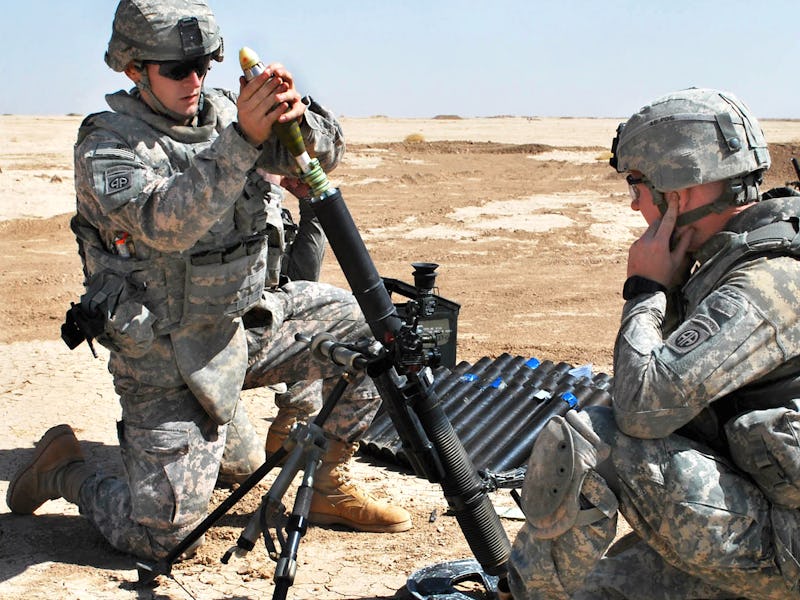How Many Transgender People Did Trump Try to Ban from the Military?
There are already trans individuals serving in our armed forces.

For around 4,000 of America’s service members, Donald Trump’s announcement that transgender individuals are now banned from serving in the military “in any capacity” hit especially close to home.
Midrange estimates from a study conducted by the RAND National Defense Research Institute in 2016 count 2,450 transgender people on active duty and 1,510 in the reserves.
By that estimate, trans individuals make up less than one percent each of the active and reserve components of the U.S. military.
Trump justified the reinstatement of the ban on trans individuals serving in the military in two different ways: by pointing to the “tremendous medical costs” incurred by people transitioning and to a “disruption that transgender military would entail.”
But data demonstrates that both of these concerns are actually invalid when it comes to the issue of allowing transgender people to serve their country through the armed forces.
“Tremendous” medical costs
A chart from RAND's research brief outlining individuals likely to seek medical treatment while in the military
The RAND study cited the cost of medical coverage for transgender individuals in the military as an “exceedingly small proportion” of the Pentagon’s overall healthcare expenditures.
It concludes that the number of trans individuals who would seek gender transition treatment, to be covered by the military, in a given year would fall between 25 and 190.
The cost of these medical treatments would total to around $8.4 million annually, a number trumpeted in headlines when then-president Barack Obama lifted the ban on trans individuals openly serving in the armed forces in June 2016.
However this figure, which encompasses both hormonal courses and surgical procedures, would account for a maximum of .017 percent of the Department of Defense’s yearly healthcare costs, which totaled $49.3 billion in 2014.
For what it’s worth, The Washington Post points out that the American military spends more on providing viagra to its soldiers than it possibly could on transgender soldiers’ care.
The Defense Language Institute Foreign Language Center's quarterly Commander's Cup
“Disruption” in the military
The term “disruption” is (perhaps intentionally) vague, and can be interpreted in a couple of ways — Trump could use the term to imply transgender people will hinder the ability of the military to deploy swiftly and effectively. He could also posit that the presence of transgender personnel could be disruptive to service members in a social sense.
When it comes to combat readiness, the medical needs of transgender individuals are simply not an inhibiting factor. At most, 0.1 percent of the military’s active component would seek gender transition treatment that would impact their ability to deploy.
To contrast, the study pointed out that 14 percent of active duty Army personnel alone were unable to deploy in 2015 for “legal, medical or administrative reasons.”
The RAND study also found no connection between transgender service members and a loss of unit cohesion. The study points out that this concern was also raised in the debate on allowing gay and lesbian individuals to serve in the military, with the same result.
This analysis was based on data from both the U.S. military and the armed forces of some of the 18 other countries, including Canada, Israel and Australia, that allow trans service members to openly serve.
And historically, there is a well-established precedent for transgender personnel serving in the armed forces.
According to a study by the Williams Institute on Sexual Orientation and Gender Identity Law and Public Policy at UCLA School of Law, around 150,000 transgender individuals have served in the military as of 2014.
The Williams Institute pulled data from the National Transgender Discrimination Survey to reach their conclusion. In the survey, participants were asked if they had ever been a member of the armed forces.
The question regarding military service from the National Transgender Discrimination Survey
20 percent of the respondents reported that they had served in the military at some point. The rate of military service for the general population is only 10 percent, which makes a transgender person twice as likely to serve in the military at some point in their lifetime.
So when will the country that transgender individuals choose to serve, in disproportionate numbers, thank those individuals for their service?
On that front, Trump’s ban is a step in precisely the wrong direction.